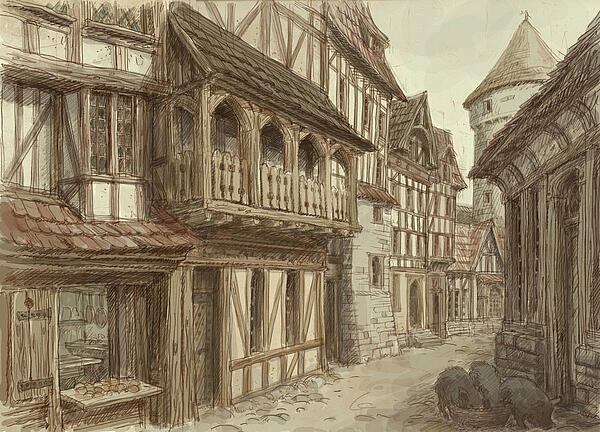Heraldry and Medieval Towns
Heraldry had a very strong link with towns in medieval times, with many choosing to use devices of heraldry to represent the characteristics they sought to be associated with. Older towns often used heraldry to associated themselves with the king, for example, with many choosing to include a lion in their shields. This was the case in York, where fie gold lions are placed on a red cross background to connect them with both the king and St. George, the country’s patron saint.
Across the southeastern coasts, Cinque ports would also use lions to demonstrate their link with the king, particularly as they provided ships to be used to protection the royal family. The Cinque Ports devised a heraldic process that saw a shield divided into two with a line crossing from top to bottom. One side would have half a lion’s body, while the other was a charge that represented that specific port. In Sandwich, this resulted in a shield with three half lions and three half war ships. Meanwhile, Great Yarmouth (which was run by the Cinque Ports Corporation) had three half lions and three fish tails, representing its loyalty and individual status as a fishing town.

Towns that had strong connections with religious buildings would reflect this in their shields, often including a mitre or a cross, while others would use shields to represent their history. In London, for example, the shield features a sword to represent the sword that killed St. Paul, the city’s patron saint.
Colchester, on the other hand, had a heraldic shield with a cross and three crowns. The three crowns represented the town’s loyalty to the monarchy but the cross represented Helena, daughter of Coel - who discovered Christ’s cross during a pilgrimage to Jerusalem - who preserved the holy cross by constructing a church in Jerusalem. Helena was the inspiration for the town’s name.
Bury St. Edmunds is another town with a strong heraldic past, holding a shield with three crossed and two arrows going through them. These crowns represented Edmund, the last king of East Anglia, while the arrows represented his death at the hands of the Danish.
See also:
MLA Citation/Reference
"Heraldry and Medieval Towns". HistoryLearning.com. 2025. Web.
